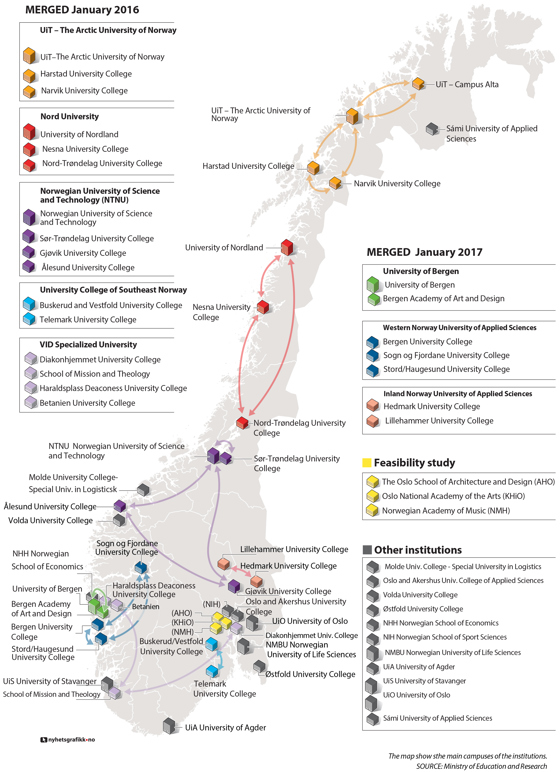The Storting white paper will highlight these primary questions. The purpose of the structure paper is to achieve higher levels of quality in Norwegian higher education and research through stronger professional environments.
The initiative for the Storting white paper must be seen in the context of the high ambitions that the government has for its knowledge policy: The government has, through its government platform, expressed high expectations about the HE sector's role in solving major global and social challenges.
The work on the white paper must also be seen in the context of framing the terms of change that universities and university colleges are currently undergoing.
Structural changes do not solve all problems and challenges at universities and university colleges. Therefore, the Ministry has initiated several processes to bring about higher quality in education and research.
An expert committee has been appointed, which will look at how funding can raise quality. In addition, processes are currently ongoing that are connected to teacher training and work related to developing more world leading research environments.
The goal is that all these processes should pull in the same direction - towards increased quality.
The work must also be seen in the light of evaluations in recent years that suggest small and fragmented research environments are an obstacle to higher quality in many fields and at many institutions.
About the process
The government aims to present a white paper concerning structure to the Storting in the spring of 2015.
Universities and university colleges, as well as other stakeholders, are invited to participate in the work. What universities and university colleges themselves believe are their opportunities and challenges will be emphasised in the work.
All state universities and university colleges are requested to evaluate how the individual institution will find its place in a landscape with fewer institutions and clearer expectations regarding academic standards.
Minister for Education and Research, Torbjørn Røe Isaksen, has held dialogue meetings with universities and university colleges about their preliminary input.
Universities and university colleges have sent their final submissions with a description of the preferred strategic position in 2020 and an evaluation of the main steps that must be fulfilled in order to reach that position. The institutions have also been requested to evaluate how they can become stronger through mergers with other institutions, or how they can lift quality at other institutions through mergers with them. The Ministry has encouraged extensive contact between institutions both within and outwith their own regions.

Follow issue
-
15/11/2016
From 33 to 21 state universities and university colleges
News story | Ministry of Education and Research
Hedmark University College and Lillehammer University College are merging to become Høgskolen i Innlandet [University College of Eastern Norway] as from 1 January 2017. “This merger is one of the last pieces of the puzzle in the most extensive structural reform of the university and university college sector in over 20 years,” says Minister of Education and Research Torbjørn Røe Isaksen.
-
14/01/2014
Clear priorities in Higher Education and Research
Press release | Ministry of Education and Research
The Government presents seven measures for higher education and research over the next four years. The goal is higher quality, says Minister for Education and Research Torbjørn Røe Isaksen.